Australian soldiers have been sharing a motto with Philippines troops: “Don’t be in a hurry to die.”
After decades of training from the United States, Philippines soldiers have absorbed elements of a more gung-ho American approach. But they are getting a different emphasis from an Australian training mission: patience, caution, survival.
It is wisdom the Filipinos are taking on board after their tough, five-month fight last year to retake their southern city of Marawi from more than 1000 Islamic State-linked insurgents, at a cost of at least 165 soldiers’ lives.
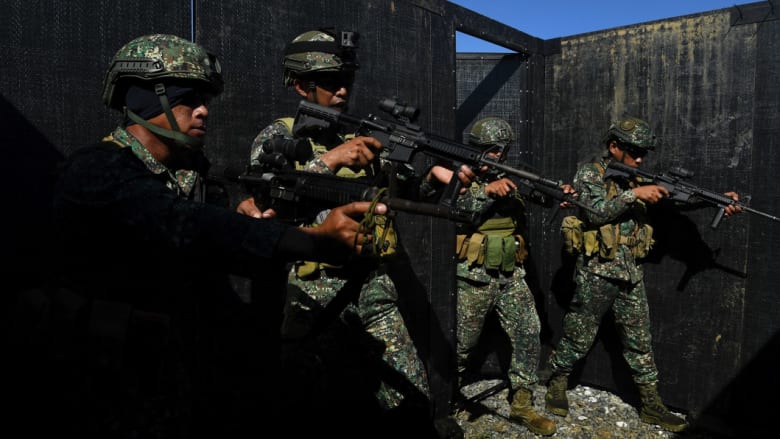
Philippines marines during training with Australian troops in Palawan.Credit:Kate Geraghty
On the island of Palawan, which neighbours the restive province of Mindanao, Australian troops have been training Filipinos in urban warfare. The Herald and The Age have been given exclusive access to the mission.
Some techniques are obvious only with the hindsight gained from doing it for years, as the Australians have been doing in Iraq and Afghanistan, in contrast to the Filipinos who have traditionally fought in jungles.
It includes simple things such as “offhand shooting” - being able to operate a gun with either hand so you can keep your body protected while shooting around corners.
How Australia is helping fight terror in the Philippines

[Video]
With many insurgent armed groups plaguing the country and the memory of the deadly Marawi siege, the Philippine military is getting training from the ADF in urban warfare.
“They never had to plan for this in the jungle, because obviously there you are never shooting around corners,” says Major Luke Holloway, who has been commanding the Australian team on Palawan.
The hope is the Philippines forces will fare better in another Marawi-type siege. It was a brutal fight that all but levelled the city of 200,000 residents; in the words of one Filipino soldier, “a wake-up call” for the country’s military.
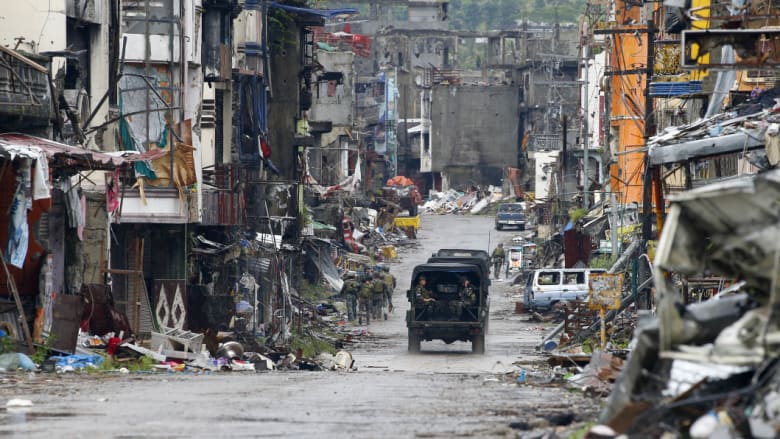
The city of Marawi in southern Philippines was almost destroyed in the months-long siege.Credit:AP
Despite prospects for political improvement in the southern Philippines, experts believe extremist groups will continue to recruit and attack. Troublingly, they have deep connections to jihadists both in the Middle East and in other parts of South-east Asia, such as Indonesia.
The combination of this latent transnational network and the possibility that another round of IS-style inspiration might unite the various groups and send them on the offensive right on Australia’s doorstep is what prompted Canberra to offer the 80-strong training assistance force to Manila last year.
“We’ve always been aware and concerned about a flow of foreign terrorist fighters … that have been radicalised even further with extremist views that will return back to their homelands ... particularly in the South-east Asia region,” says Air Marshal Mel Hupfeld, the Australian Defence Force’s chief of joint operations.
“We want to make sure there’s no transfer of terrorism from one location to another … and ideally prevent them affecting us in homeland Australia.”
The “don’t be in a hurry to die” motto is part of the urban movement combat shooting training, in which Philippines marines are being trained to enter and clear buildings. It means moving in pairs, systematically covering each corner of each room.
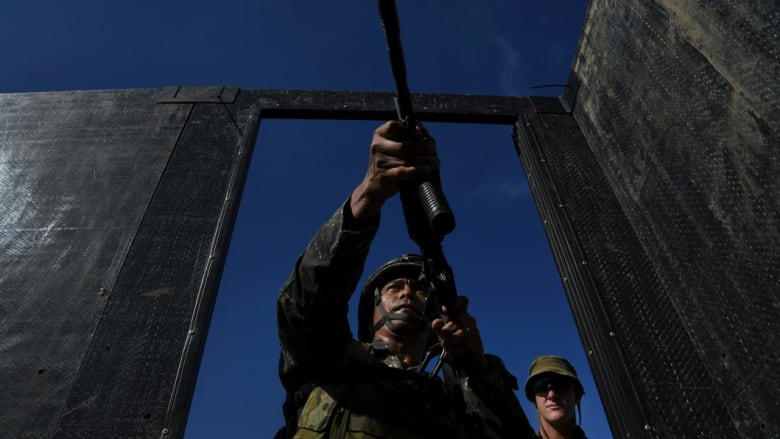
Private Brodie Smith (right) observes a Filipino marine as he enters a mock building during training.Credit:Kate Geraghty
It is one of the most dangerous things a soldier can do, explains infantry platoon commander Captain Thomas Grawich.
Doorways are known as “fatal funnels” because they bunch soldiers together into a target. Two soldiers can cover two or three corners after opening a door, but there is always a blind spot. Manoeuvres to get the upper hand use surprise and lure an enemy into giving away their own position. The worst thing you can do is enter a door and just stand there.
It is all based on doctrine that has been developed over years by Australia’s special forces units.
On a rifle range that sits on the grounds of a low-security prison farm, the Filipinos are learning marksmanship techniques. Philippines combat shooting is about where Australian doctrine was 20 years ago.
One trick they are being taught is to raise their weapon and fire quickly, even if they haven’t sighted a target perfectly. Speed is essential because the first bullet puts an enemy on the defensive. The precise aim can come with the second and third rounds.
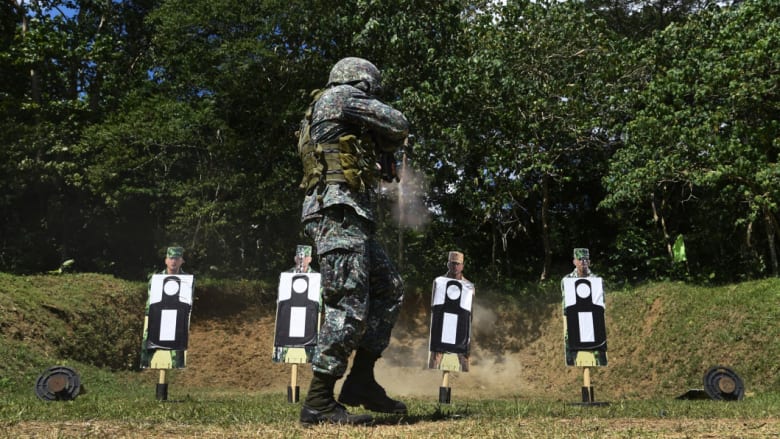
A Filipino marine fires at a target during training.Credit:Kate Geraghty
“The simple lesson from engagements like Marawi is that the guy who shoots first is the guy who is going to survive,” says Major Holloway.
Corporal Aaron Harch and Private Brodie Smith, from the Brisbane-based 8/9 RAR, say most of the Philippines marines are halving the time it takes them to squeeze off their first round.
Marine Staff Sergeant Crisanto Casarino is a case in point: he’s gone from about 1.5 seconds to 0.7 seconds with a few days’ training. That’s likely the difference between life and death.
“They still need to move with speed and aggression,” Harch says. “But they also need to gain as much awareness as possible. Threats will come from every angle. So they need to be thinking about their stance and movement, so that regardless of anything that happens they’ll more instinctively respond with control and accuracy. A lot of it is just muscle memory and rote learning.”
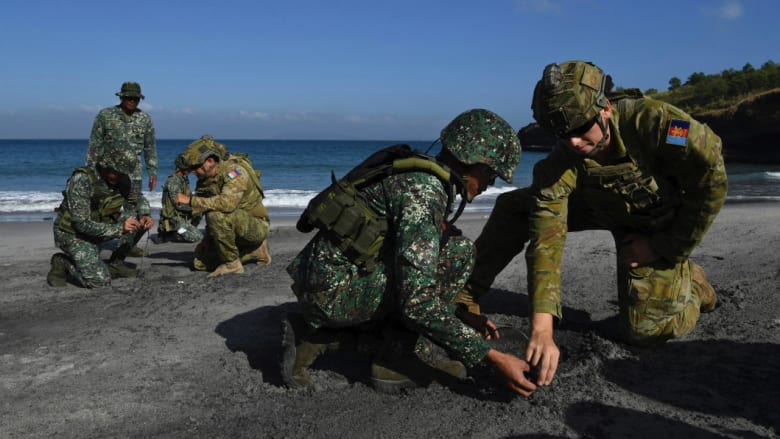
Australian Army Sapper Nicholas Field and Lance Corporal Callum Leete instruct Philippine marines during training at Marine Base Gregorio Lim.Credit:Kate Geraghty
At Marine Base Gregorio Lim, south of the capital Manila, Australian snipers Private Ryan Hudson and Corporal Joe Hollis are teaching Filipino counterparts about sharpshooting in cities. Finding the right position and staying concealed are critical.
Snipers work in teams of two, one shooting and the other spotting through binoculars to see where shots land and what is going on around the narrow focus of the rifle sight.
Private Hudson shows a pair of local snipers - who cannot be named because their identities are protected - how to put up a black curtain inside a room for concealment. They will shoot through holes cut in the curtain and tiny gaps in the walls. That’s how hidden they have to stay. The curtain means that unless someone is standing right outside peering into the room, the snipers will be very hard to see.
Even so, snipers are so valuable they need self-protection options. “You have to make sure you have an escape route,” Private Hudson explains. “You can use early warning systems, like putting glass or rubble on the ground so you can hear anyone approaching.”
Army Scout Rangers officer Major Alberto Balabat, who commanded troops in Marawi, said the insurgents there had some very good snipers. “We were in shock," he says. "We were very surprised that the enemy was very much prepared and more skilled than we’d seen before.”
Another marine special forces officer, who cannot be named, recalls how he and his men would take off their helmets and poke them above cover to draw insurgents' fire so they could identify their position.
Beyond the urban combat training, the Australians are also helping the Filipinos with advice on policing the porous sea border between the Philippines, Indonesia and Malaysia and stopping the movement of potential fighters and weapons, says the commander of the training mission, Army Lieutenant-Colonel Gavin Ware.
"We've trained with over 7000 members of the Armed Forces of the Philippines in exercises that have included urban combat techniques, maritime security coordination skills and air operations,” he says.
An upcoming plebiscite to deliver greater autonomy to the Philippines’ Muslim-majority southern regions should go some way to alleviating some of the political volatility and the grievances of disaffected young people that make them easy recruits for extremists.
But experts don’t believe the problem will go away. Steven Rood, a visiting fellow of the Australian National University who has worked in Mindanao for over a decade, said some groups, such as the decades-old Abu Sayyaf and the newer Bangsamoro Islamic Freedom Fighters (BIFF), won’t be satisfied with autonomy.
“They’re going to try and prove that autonomy doesn’t help and what you need is a caliphate,” Rood says. “They will try to be the spoilers.”
Just this week, BIFF fighters clashed heavily with Philippines soldiers an hour outside the major city of Cotabato, where Australian trainers were based for much of the past year before they moved to Palawan.
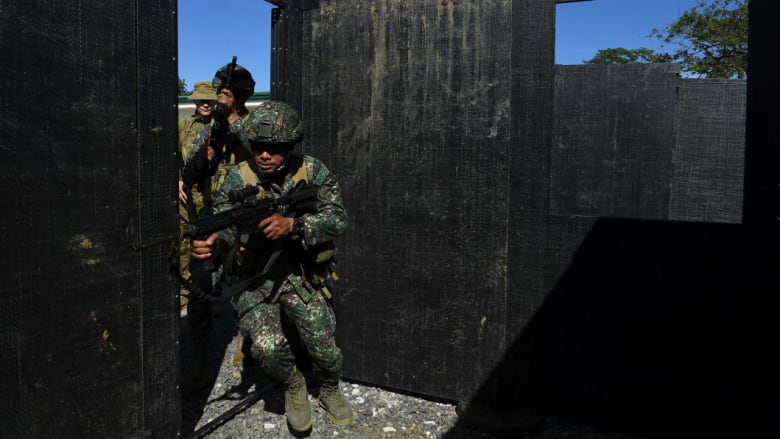
Filipino marines during urban combat training.Credit:Kate Geraghty
One persistent problem, he and others say, is the Philippines government’s failure to quickly reconstruct Marawi, which was all but razed as the military blasted the IS fighters out. Former residents remain in camps and are getting angry, having been told they won’t have new homes until 2022. That feeds into the IS narrative that it was the military, not the insurgents, who destroyed Marawi.
“Nothing’s happening,” Rood says. “The tragic slowness of this entire process is going to help [insurgent] recruiting.”
Air Marshal Hupfeld also alludes - if diplomatically - to the slow reconstruction. “That’s very clear to the armed forces of the Philippines, yet that’s a whole-of-government approach that the ... Filipino government needs to take in terms of reconstruction,” he says.
It was a brutal and desperate fight. The Philippines forces often levelled buildings to get at the insurgents inside. They used flamethrowers and even Molotov cocktails. They faced everything from booby-trap bombs known as IEDs to civilians who had been forced to carry weapons by the insurgents.
Captain Ramsel Dugan, the commander of an elite Philippines Army Scout Ranger company who spearheaded the killing of key insurgent leader Amin Baco and captured 39 hardcore fighters, says he’d learnt a lot about moving patiently, especially to avoid IEDs.
“In Marawi, we were very time pressured,” he says. “What I observed in the Australian instructors is to do it slowly but surely in order to avoid casualties.”

No comments:
Post a Comment
Note: Only a member of this blog may post a comment.